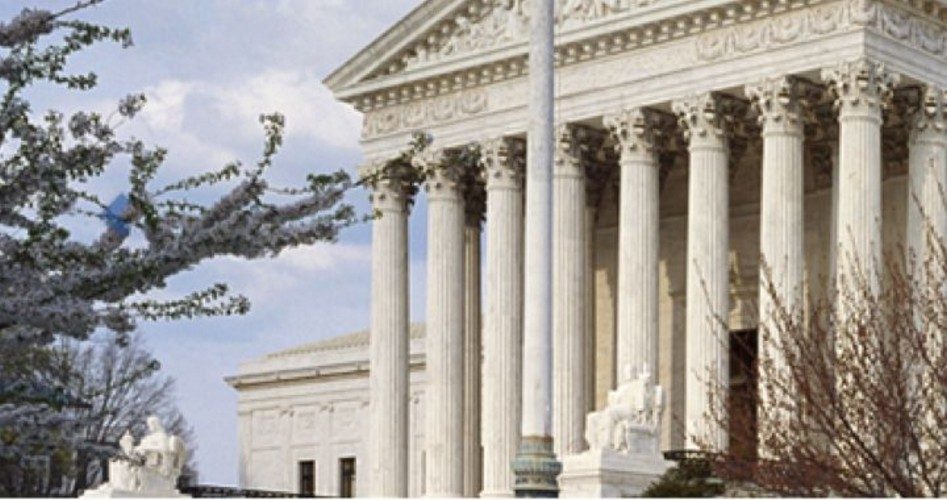
In what could turn out to be a shrewd political move, Republican presidential candidate Donald Trump expanded his list of potential Supreme Court nominees on Friday. The timing, just before the first debate on Monday night, couldn’t be better. It sets the tone and part of the conversation of that debate and puts his opponent, Democrat contender Hillary Clinton, on the defensive: She has yet to provide voters with her official list of nominees for the high court.
In addition to the 11 nominees announced back in May by the Trump campaign are the following:
• Senator Mike Lee (R-Utah);
• Neil Gorsuch, a judge of the Tenth Circuit Court of Appeals.
• Margaret Ryan, a judge of the U.S. Court of Appeals for the Armed Forces;
• Edward Mansfield, a justice of the Iowa Supreme Court;
• Keith Blackwell, a justice of the Georgia Supreme Court;
• Charles Canady, a justice of the Florida Supreme Court;
• Timothy Tymkovich, chief judge of the Tenth Circuit Court of Appeals;
• Amul Thapar, a judge of the U.S. District Court for the Eastern District of Kentucky;
• Frederico Moreno, a judge of the U.S. District Court for the Southern District of Florida; and
• Robert Young, chief justice of the Michigan Supreme Court.
Topping the list is Senator Mike Lee of Utah, who has previously firmly declined to endorse Trump. When it was learned that he was on the new list, Lee’s communications director, Conn Carroll, reiterated his position:
Senator Lee already has the job he wants, which is why he is campaigning to represent the great people of Utah again this year. [Trump’s nomination of Lee] does not change Senator Lee’s mind about Trump in any way whatsoever.
Concerns about the makeup of the Supreme Court during the first, and possibly second, term of the new president continue to mount as Father Time takes his toll on the present members of the court. On January 20, 2017, Justice Ruth Bader Ginsburg will be 83 years old, Justice Anthony Kennedy will be 80, and Justice Stephen Breyer will be 78. Mortality statistics favor the opportunity for the new president to be in the position to nominate several new members during his or her term, thus setting the tone of judicial decisions for generations to come.
John Malcom, director of the Heritage Foundation’s Edwin Meese III Center for Legal and Judicial Studies and chairman of the Criminal Law Practice Group of the Federalist Society, expressed his point of view on the list from a limited government and original intent point of view:
When it comes to interpreting statutes and the Constitution, a judge must keep uppermost in mind that he or she did not write the text and should not attempt to rewrite that text through creative “interpretation” to mean something quite different from what was intended by its drafters, but which he or she personally considers more fair, wise, or just.
In other words, a judge should interpret the text and structure of a statute or the Constitution, based on the original public meaning of that text at the time it was adopted, and should not, under the guise of statutory or constitutional interpretation, impose on the rest of society his or her own policy predilections based on that judge’s perceptions of contemporary mores. The men and women whose names have been added to the list appear to adhere to this view.
This is just the opposite of the point of view of at least four of the justices on the present court. Not only that, it is an elitist group representing Harvard and Yale and both coasts of the United States, with precious little representation from the rest of the country. Deceased Justice Antonin Scalia, whose seat remains open, expressed his concern about that elitist point of view of his fellow justices in one of his dissenting opinions:
[The] Court … consists of only nine men and women, all of them successful lawyers who studied at Harvard or Yale Law School. Four of the nine are natives of New York City. Eight of them grew up in east- and west-coast States. Only one hails from the vast expanse in-between. Not a single Southwesterner or even, to tell the truth, a genuine Westerner (California does not count!).
Instead, Trump’s picks are geographically diverse, with many enjoying non-federal judicial experience. Nine of the new 10 are sitting state supreme court justices from eight different states across the country which, in Malcolm’s opinion, bodes well for the concept of federalism built into the Constitution and increasingly ignored by the present majority in key cases.
Trump’s addition also represents an olive branch to Senator Lee, puts Hillary Clinton on the defensive, potentially dictates at least part of the debate on Monday night, and offers a palliative to conservatives still concerned that Trump might turn out to be a liberal Trojan Horse once he is elected.
A graduate of an Ivy League school and a former investment advisor, Bob is a regular contributor to The New American magazine and blogs frequently at LightFromTheRight.com, primarily on economics and politics. He can be reached at [email protected].



